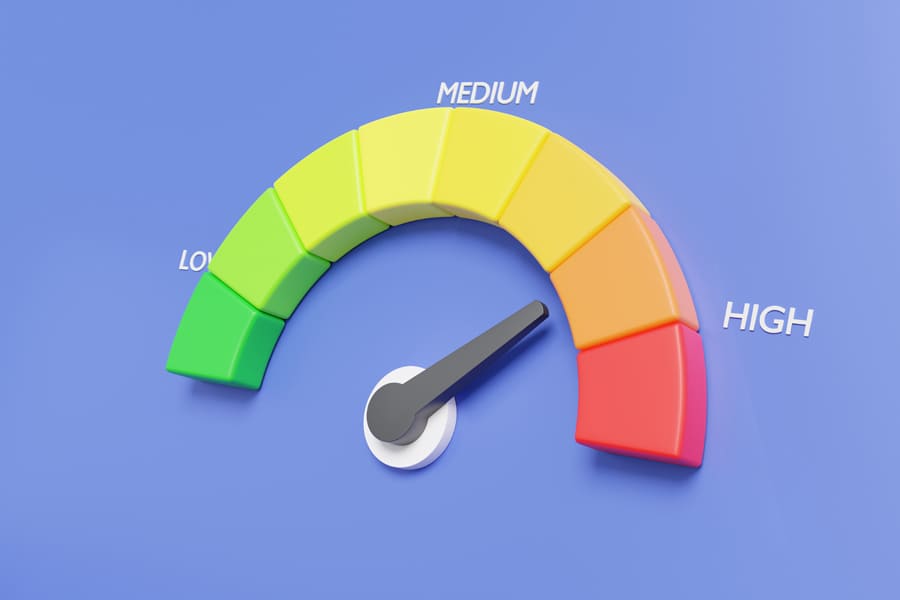A natural step for many growing businesses is expanding their geographical boundaries. However, only supporting a single default language on a website could be a hurdle preventing you from gaining international success and recognition.
You can pay for a translator, right? Well, it’s not that easy. A multilingual website requires an intricate localization effort, and maintaining it comes with its own challenges.
This is why today we’ll walk you through a step-by-step guide on successfully turning your website into an international presence.

Content localization
Localization refers to the adaptation of website content to fit a foreign market. Naturally, translation is a large part of it, but it’s equally important to consider cultural and social nuances.
When translating a website verbatim, you risk failing to relay your message. Despite your good intentions, different demographics may react differently and even feel insulted if your site’s content isn’t sensitive to your visitors’ culture.
Translating website content accurately
The bulk of the localization efforts will be directed toward the translation process. The translator must consider which parts need to be translated directly and which need altering.
For example, pages like Privacy Policy must remain relatively similar in content as they are legal statements (except if data laws differ in the given country). In general, informative, technical, and educational pieces of website content should maintain high literal accuracy.
On the other hand, witty branding phrases and slogans are often lost in translation. Part of the localization efforts is finding a way to keep their core meaning and effect while expressing it via new rhetoric. This shows attention to detail and feels natural to users.
Adapting content for different cultures and regions
Effective localization considers customs, traditions, and linguistic nuances. Be mindful of cultural sensitivities, idiomatic expressions, and even imagery.
Consider that you could involuntarily offend a group of users. Tailor your content to align with local norms and values – this will strengthen your connection with your international target audience and improve customer loyalty.
Also, keep in mind that some regions utilize different measuring systems like measuring (cm/inch), sizing (an M is different in the US and EU), weight (kg/lbs), and currency. Converting measurements into the relevant system is crucial in providing a smooth and transparent customer experience.
Maintaining consistent branding across all languages
Brand consistency is essential for your business’s long-term presence. Ensure your core messages, tone, and visual identity remain consistent when translating.
A great way to do this is by preparing style guidelines for translators to stick to. This will ensure cohesiveness across the different language versions of your website. Brand guidelines are also helpful for preparing marketing campaigns and outsourcing different services.
Brand guidelines usually include the following:
- Guidance on logo usage;
- Brand voice & brand messaging;
- Writing and copy guidelines;
- Grammar rules;
- Vision, mission, values;
- Brand story and essence;
- Typography;
- Color palette.
Always send your brand guidelines to new employees or freelancers so they can stick to the established brand style and language.
Choosing the right translation method
Depending on the organization’s scale, budget, and priorities, the right translation method will vary. Below, we will discuss some of the options available.
Machine translation vs human translation
Using machine translation tools is one of the most efficient ways to automatically translate website content, especially when dealing with multiple languages. Adding the necessary software to your website is much easier and more efficient and saves time with automatic translation.
Such a solution can be Google translate or a built-in translation feature in a multilingual website builder.
However, machine translation tools (even those running on advanced AI technology) may not understand cultural nuances. This is why you should always manually edit the translation to avoid “too literal” or tone-deaf translations.
On the other hand, hiring a competent translator will ensure high-quality multilingual content that considers “human factors” – although at a higher cost. Enlisting manual work can be considerably more expensive, especially when translating your website into multiple languages. Still, it’s usually the go-to strategy when localizing complex websites.
Using a translation agency vs an in-house translation team
Choosing between a translation agency and an internal team highly depends on your business’s resources and structure.
Hiring an agency with a proven track record in your industry can provide top-quality translation and quality assurance. On the other hand, establishing an in-house team can grant you better control over the translation and be more cost-effective in the long term.
This is true especially if your business requires regular translations like website updates, cross-language, and social media posts.
Crowd-sourcing translation through user-generated content
Some businesses involve their community in the translation process. This can potentially be the least expensive approach, which has the added benefit of allowing you to gather user-generated content and insights into your target user’s own language.
Ultimately, this will help you adapt your web pages to the new language with improved foresight concerning cultural and linguistic nuances. Allowing your followers to translate your website into their language is a fantastic way to build customer loyalty and a sense of contribution.
Still, it also requires a rigorous review process to ensure the quality of the submissions. In addition, offering useful incentives like discounts is important because it rewards contributors while bringing in more business.
Website design and functionality
You’ve translated your website. Great! Now, it’s time to implement your translation into an engaging format. This, however, can often differ from your native one.

A localized website should adhere to your target audience’s preferred formatting and make it easy to navigate by providing personalization options. Here are some functional design aspects to keep in mind when introducing changes.
Designing for right-to-left languages
Specific written languages like Hebrew, Urdu, and Arabic start from right to left (RTL). When building a multi-language website, your design must be compatible with left-to-right and right-to-left languages.
In some countries, not only is the text right-to-left, but certain interface elements are as well.
Here’s a list of elements you need to consider repositioning:
- Text alignment;
- Navigation bar;
- Icons;
- Scrollbar position;
- Forms;
- Numbers and dates;
- Tables;
- Carousels and slides;
- Buttons.
Effectively, this means that to build a comparable user experience, aspects like navigation menus and images need to assume a new position to fit the reading flow of the user’s preferred language.
Implementing language switchers
A language switcher is a manual tool that lets users view translated content in their preferred language. Multilingual websites usually have this option in the top right corner of every web page – they should be easy to navigate, using national flags as a language indicator.
It’s recommended to avoid automatic language detection or methods that scan the browser language as they’re usually inaccurate and may cause website loading issues.
Ensuring that all website features work properly in all languages
Whenever you localize websites, you must thoroughly test them. A particular language version may have longer words and phrases, which could lead to layout incompatibility.
It’s also important to consider font compatibility issues and general website responsiveness.
Run initial tests and regularly monitor the performance of the website’s multiple languages.
Search engine optimization (SEO)
Optimizing your website for search engines is a great way to increase organic traffic and revenue.
But the best SEO practices can vastly differ from one language to another, especially from one culture. Different regions and cultures may have different central values, influencing search intent.
Conducting keyword research for each language
All SEO efforts start with finding relevant keywords or key phrases. They help link your website to your user’s search intent to rank higher in SERPs (search engine result pages). However, literally translating your core language keywords might not be the most effective multilingual SEO practice.
You need to consider other factors, such as your clients’ search habits and consumer behavior, as well as the products that perform best with the respective demographic.
SEO for multilingual website development requires in-depth knowledge of your different audiences, but establishing good SEO across the different versions of your website can significantly boost your search engine authority, helping you solidify your presence globally.
Implementing hreflang tags
If you decide to introduce automatic geographic recognition into your website for a smoother user experience, implementing hreflang tags is an excellent multilingual website solution. Hreflang tags are HTML attributes that help search engines detect the user’s local language, automatically translating it.
Remember that not every search engine uses hreflang – Google and Yandex do, but Bing uses language meta tags instead.
Avoiding duplicate content issues
Your search engine rankings are negatively impacted by duplicate content.
Ensure that all web pages have been translated and each one provides unique value relevant to the different language-speaking groups.
Website management
Your localized website should be nearly complete. This is an excellent step towards expanding your business, but it’s not a one-time effort.
Localized websites require constant attention, especially if you consistently add new content and products. You should avoid content discrepancies between the different versions of your site because you don’t want your customers to feel like they’re missing out.
Here’s how to manage your new website versions in the long run.

Managing multiple versions of the same content
As you expand your multilingual website, you might find managing such a complex web of content in different languages challenging. This is why consolidating and centralizing the work within a content management system (CMS) or a specialized localization platform is often essential.
Having a solid infrastructure allows you to organize content and streamline collaborations. For example, you can set up a text expansion system that lets translators enter shortcuts and take advantage of templates, a typical valuable time saver in localization.
Ensuring that all translations are up to date
Any changes or additions to the website content need to be reflected in all language versions. This can be easily managed using the aforementioned CMS systems – each translator can be tasked with completing the individual amendments for an easy and streamlined process.
You must launch all changes simultaneously to provide equal access to new information, features, products, and pricing to your entire audience. Consider new content in advance so you can localize it in time.
Conducting regular quality assurance checks
A complex website that supports multiple languages is bound to run into some errors. Running frequent quality assurance checks on all language versions is one of the multilingual website best practices.
You’ll be able to spot and fix issues like spelling and grammar mistakes, layout bugs, and broken links.
Localizing marketing efforts
Remember that your ads, newsletters, e-mail, and social media content still lead to your website. To get your new target audience to visit it and convert, you must also focus on making your marketing efforts palatable.
Localizing marketing materials and assets follows the same rules as localizing your website. Here’s how to follow them.
Adapting marketing campaigns for different languages and cultures
A successful multilingual marketing strategy aims to increase sales and ROI by appealing to international audiences authentically. By tailoring your marketing efforts to another culture’s buying habits, taboos, preferences, and language, you can provide a much more personalized experience.
Therefore, you position yourself as an empathetic and understanding problem-solver, aware of (and celebrating) the cultural uniqueness of your different target groups.
Here are some multilingual marketing pieces of advice to be mindful of:
- Your tone of voice might change: Try to maintain a consistent tone, but consider the possibility that it might not translate well into every language. If that is the case, research your audience and establish a voice that will resonate with it.
- Different cultures, different pain points: Certain cultures have differing priorities. A pain point your business addresses in the West may be irrelevant for users in the East. And since your marketing efforts rely on solving problems, repositioning may be in order.
- Know your audience: To provide the best possible experience, you must often conduct market research from scratch and familiarize yourself with your multilingual demographic groups. This will aid you in choosing the right rhetoric, imagery, and fonts.
Last but not least, avoid making assumptions. Making strategic decisions based on assumptions is risky and could lead to a bad reputation for your brand. Always trust experts or conduct thorough autonomous research to base your decisions on.
Translating email marketing campaigns
Email design may also change depending on your audience.
Part of the localization process is to be culturally appropriate with your design and translation and consider local email regulations and time zone differences for launching e-mail campaigns.
Creating multilingual social media content
Social media platforms are a great way to connect with an international audience by making engaging content relevant to the audience. Some companies create separate profiles, curating a unique social media strategy for each audience.
Another great way to earn the trust of a foreign audience is to partner with influencers. They can bridge the gap between you and the market by authentically relaying your messaging.
Providing customer support
Whether you sell services or products, you will receive feedback from your customers or website visitors. This is a great opportunity to speak to them, offer personalized solutions, and give a positive brand impression.
Customer support is also subject to localization. A business should avoid translating their CS processes word-by-word but ensure that new ones are sensitive to the new target audience’s preferences.
Offering multilingual customer support
Hire multilingual native experts to maintain a strong customer satisfaction level and solve issues that may arise in a culturally appropriate manner. It’s reassuring for customers to know that a company can communicate in their language.
Excellent customer support doesn’t just solve problems but also helps build brand loyalty.
Providing translated product manuals and FAQs
Translating documentation into multiple languages can help users better understand your products and services.
This way, you will reduce their need to contact you directly and improve the overall user journey and flow.
Ensuring that all customer support tools are available in all languages
In addition to employing competent staff, you’ll want to implement the localized interface to all your customer support tools and systems.
This includes translating support tickets, chatbot interface, and email templates.
Performance and speed
Performance is key when talking about user retention and website success. Loading a site with multilingual content can sometimes be taxing to its speed, influencing every website rendition.
Fortunately, there are ways to offset this and ensure you provide the best possible experience.

Ensuring that website performance is not compromised by multilingual content
Since multilingual websites have multiple times the content, it’s common to see a slight reduction in loading speed and general performance. This could be an issue, as website speed is essential for SEO and the user experience.
Make sure that you set up efficient code and language-specific caching. Also, remember to compress images and file sizes on each language version to improve loading speed.
Optimizing website speed for international visitors
There are other ways to improve website speed. One option is to have a different domain for each language version of your website so they don’t share the same data space, allowing for faster loading times.
You should also minimize any external scripts and third-party resources to reduce potential delays. In addition, always remember to optimize the mobile version of your website.
Implementing a content delivery network (CDN) for faster page load times.
Consider setting up a content delivery network (CDN). CDN is a geographically distributed network of proxy servers that improves performance by connecting them to a database of your site that’s physically closer to them.
This fantastic solution for scaling businesses will allow you to support complex multilingual websites with minimal performance issues.
Frequently asked questions
What is content localization?
Content localization adapts content for different cultures, languages, and endemic consumer behavior.
What are the potential risks in building a multilingual website?
Inaccurate translations and cultural insensitivity may affect user trust and the website’s credibility. Also, managing multiple language versions requires regular updates and quality checks.
Machine translation or human translation for multilingual websites?
While machine translation is quick, it may need to be more accurate, especially considering cultural factors. Human translation offers higher quality; however, it’s often more expensive.